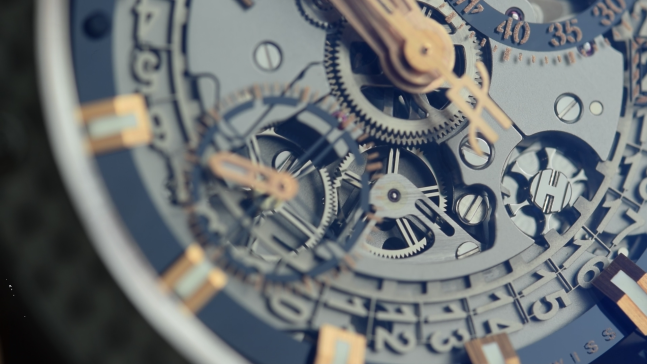Chronographs seem fairly simple. Press a button and it starts the ‘stopwatch’, press it again, it stops, press another button it resets. Repeat. Sounds simple right? Well for most, it is! But for some, the intricacies of the chronograph, its specific function and the structure of the mechanism is very important. And chances are if you are reading this blog post then you are one of these people. Or, are trying to become more knowledgeable on Chronographs so you can be more discerning in future. Well, either or, you’re in the right place as today we’ll be going over almost all the different chronograph types you could possibly find out there in the wild!
We’ll begin with what is on the dial. Several different variations of chronograph scales are regularly seen on the dials of luxury chronographs. And we’ll explain them in order of popularity.
Tachymetres: The most common of chronograph scales is a tachymetre. Tachymetres are used to measure speed. the Chronograph is begun while travelling at speed, then stopped when a marker is reached, most commonly one mile or one kilometre. The number pointed to by the chronograph seconds hand once the specific distance is passed is the average speed that was being travelled. Seen here on this Omega Speedmaster Co-Axial Chronograph 38mm.

Telemetres: less common are telemetres. Telemetres are used to measure a distance from an event. The chronograph is started when an event is seen, such as lightning or a cannon firing, and stopped when the event is heard. the number pointed to by the chronograph seconds hand is the distance from the event. Worked out by using the difference in the speed of sound, compared to the speed of light. Used here on this Oris Big Crown ProPilot Chronograph 44mm.
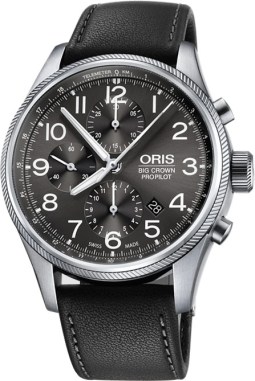
Pulsometres: least common is pulsometres. watches that feature a pulsometre are often known as doctor’s watches as their purpose is to measure heart rates. Either graduated for 15 or 30 pulsations (usually written in french) the wearer begins the chronograph, counts 30/15 beats of the patient’s pulse and on the final beat of the 15/30, they stop the chronograph and the number pointed to by the chronograph seconds hand is the patient’s heart rate. Used by Blancpain on their Villeret Flyback Chronograph Pulsometer 43.60mm.

Some other aspects of the are more related to the movement but also have a direct effect on the dial as well. Such as the layout of the chronograph subdials and the graduation of the minute and hour totalisers. For example, modern chronographs tend to have 3 subdials. A running sub-seconds hand for normal timekeeping, a chronograph minutes totaliser, and a chronograph hours totaliser. Often referred to as tri-compax chronographs due to the three subdials. However, some chronographs aiming for a more vintage styling opt for a less crowded layout. Featuring only a sub-seconds hand and minutes totaliser. Also known as bi-compax. Longines produce both variants of chronograph in many different styles but shown below is the twin register Master Automatic Chronograph 40mm and the triple register Master Automatic Chronograph 42mm
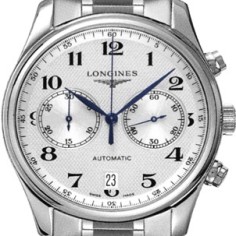

Similarly, the graduation of the minutes totaliser can often vary from only 30 minutes to 45 or up to 60 minutes. 60 & 30 Can be seen above, with the twin register chronograph on the left with a 60 minutes totaliser and the triple register chronograph having a 30 minutes. It is likewise with the hours, and they too can vary if it has one at all! hour totalisers are most commonly seen with 12-hour totalisers as is seen above but this can vary.
the most unusual layout difference is using a movement that can time into fractions of a second. Movements that can do this often have their own unique layouts so we can’t generalise these!
Now onto the variants that come about directly due to the movement.
Some varying types of chronograph you will have heard of already. Such as the standard chronograph displaying the time and start/stop/reset chronograph functions. Another well-known form of chronograph is a flyback chronograph. A flyback chronograph does not need to be stopped, reset, and started again. Instead, it can be restarted and begun instantly with one press of the reset button. saving crucial fractions of a second in some circumstances!
A lesser-known form of chronograph type is a split-second chronograph or a Rattrapante chronograph. a split-second chronograph has two seconds hands one directly beneath the other, that can be operated independently to time two separate events simultaneously. spilt second chronograph types are the hardest to manufacture as the precision required is far more than a standard chronograph. As a result, they are very uncommon and very expensive! A great example of a Rattrapante chronograph is the Jaquet Droz Astrale Rattrapante 45mm with the spilt seconds hand and main seconds hand clearly visible.

The differences from here on in get very technical.
One of the main arguments surrounding the chronograph is those that prefer a cam-actuated chronograph or a column-wheel actuated chronograph.
Before we get into that though we need to talk about clutches. A clutch in a watch operates much like the clutch in a car. Delivering and removing power from the movement to the chronograph mechanism by pressing and retracting chronograph wheels to the gear chain of the watch. There are two types of clutch in a chronograph watch, a vertical clutch and a horizontal or lateral clutch. A horizontal clutch is much more common but can lead to the second hand jerking off of zero instead of a smooth start due to the way the chronograph gears mesh with the gear train. The video below of the Hublot King Power UNICO Chronograph 48mm 701.oq.0180.rx shows the operating of a column-wheel chronograph with a horizontal clutch, nearing the end of the video, due to the chronograph mechanism being on the dial side we can see the activation and jump of the seconds hand when activated. Similarly, if you look closely you can see the clutch engaging and disengaging as the chronograph is started and paused. Similarly, nearer the right of the picture you can see the column wheel turning as the chrongraph is sactivated and paused.
Contrastingly, a vertical clutch presses the gear operating the chronograph vertically onto the driving gear from the gear train, meaning the second hand smoothly moves off the 60 seconds marker due to the fact that teeth aren’t involved as the two gears are pressed together like a normal clutch. Similarly, as gearing teeth are not involved, a vertical clutch chronograph can be run for longer periods than a horizontal clutch without causing additional wear to the movement. However, many prefer horizontal clutches as they like to see the gears moving into place as the chronograph is used. This cannot be seen as much with a vertical clutch as the clutch is most commonly buried deep within the movement. The operating of a vertical clutch can only be seen on a handful of movements and even when it can what can be seen is minimal as the clutch action is vertical so all that can really be seen is the separator arms releasing the clutch. Shown below is the vertical clutch used in current Rolex Daytona models.
 https://www.rolex.com/watches/cosmograph-daytona/all-models.html#g=0
https://www.rolex.com/watches/cosmograph-daytona/all-models.html#g=0
Now knowing that, let’s move into the different types of chronograph!
A cam actuated chronograph is much less expensive to manufacture and less tricky to service and repair due to the flat straight build of the chronograph parts. Similarly, they are a lot tougher and were selected by NASA over a column-wheel operated movements as a result. However, there are downsides. Cam actuated movements take more force to activate the chronograph and are generally seen as less prestigious. Similarly, it is almost unheard of for a cam-actuated chronograph to have a vertical clutch, meaning the second hand often jerks due to the imperfect meshing of the gears on the horizontal clutch. Shown below is the cam-actuated mechanism of a common cam movement the ETA7750.
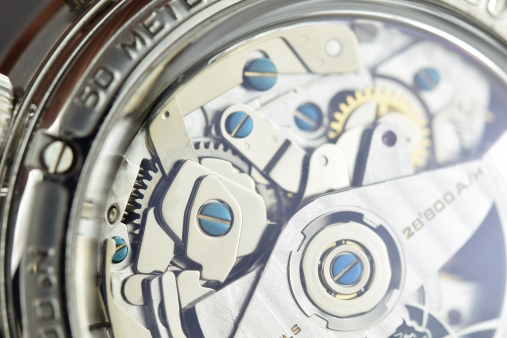
However, a column-wheel operated chronograph is operated by a wheel with upright teeth and levers that sit between the thin columns that rotate the column wheel in increments when it is activated, leading to a more gentle activation. And, when coupled with a vertical clutch, gives a smooth sweep from the moment of activation. However, due to the complexity of manufacturing column wheels, they garner a more significant price than a cam-operated chronograph and are slightly less common as a result. Column wheel chronographs are frequently seen with both vertical and horizontal clutches so it is up to personal choice which clutch you have on your column-wheel chronograph!
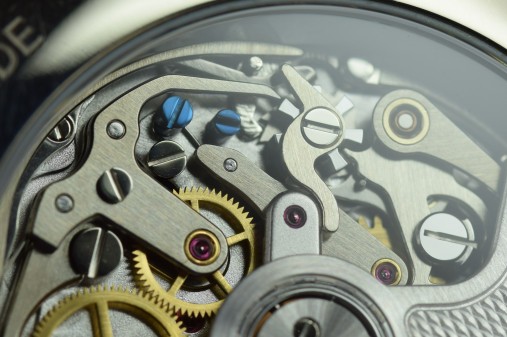
VERDICT:
The type of chronograph you buy will depend on many things, the most important being function, style & budget! If you’re looking for a high end, sleek dress chronograph, then you’d probably be looking for a column-wheel chronograph with a vertical clutch for its history and elegance. If you were looking for a sports watch with more presence on the wrist and greater reliability under strenuous conditions, then you’d probably be looking for a cam-actuated chronograph with a horizontal clutch. And all different variations between for different individuals with different requirements. Whatever chronograph you are after and whatever your budget we’ll have your perfect watch likely significantly below retail at thewatchsource.co.uk.
If you enjoyed this article, be sure to check out the countless other Horological reviews, articles and tips on the watch source blog! Be the first to be notified of new Blog releases by following our Facebook, Twitter or Instagram linked below. And keep up to date with our YouTube video versions by subscribing and turning on the bell to receive notifications of our weekly releases!
As always, visit thewatchsource.co.uk and thewatchsource/preowned to view our extensive selection of luxury watches at un-rivalled prices with up to 15% off luxury watches. Specialising in over 40 opulent brands both brand new and pre-owned watches and with over 60 years of combined experience in the luxury watch industry, we can more than fulfil all your horological needs!
YouTube: https://www.youtube.com/channel/UC9hyn-RgapIl6lYWYbA6nEQ
Facebook: https://www.facebook.com/thewatchsource/
Twitter: https://twitter.com/WatchSourceUK
Instagram:

